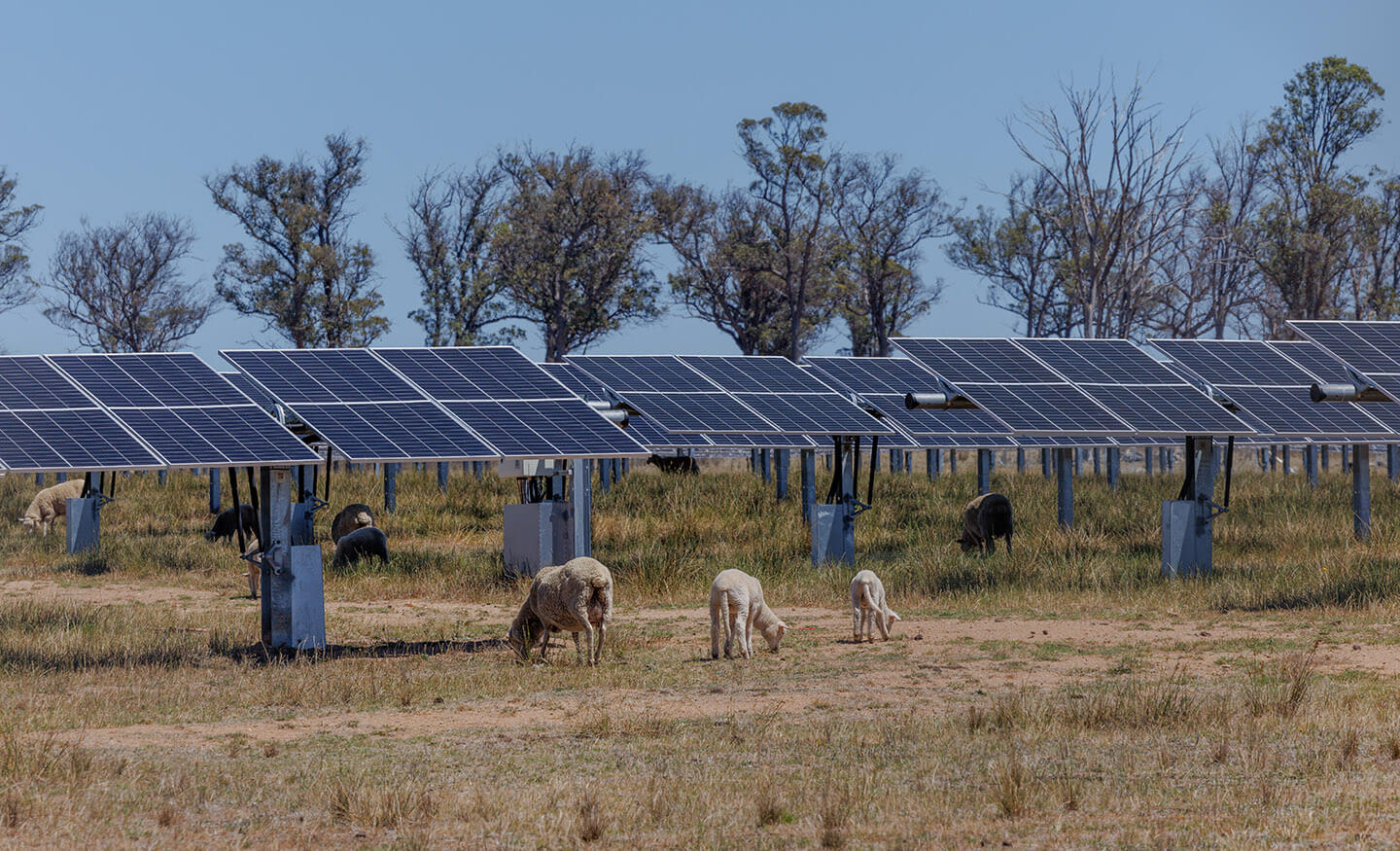For fifth-generation farmer Cameron Wood, the future of farming doesn’t mean leaving tradition behind, it means evolving with it.
Cameron’s property in the New England, New South Wales, has been in his family for more than 140 years.
Through a partnership with New England Solar by ACEN Australia, Cameron’s farm is part of a quiet revolution sweeping through regional NSW: solar grazing.
Solar grazing is the practice of allowing livestock, typically sheep, to graze on land that’s also being used to generate solar energy. It’s a win-win for both industries. And for Cameron, it’s added a new layer of sustainability and security to his family’s legacy.
Roughly 6,500 Merino and crossbred sheep now graze across his land and the neighbouring solar project site. The panels track the sun from east to west, producing clean energy, whilst also offering shade and shelter to the livestock. The setup not only generates power but also helps Cameron maintain healthier pastures and animals.
“The sheep keep the grass down and the panels give them shelter. It’s good for them, good for the land, and good for the business.”
There are several reasons sheep and solar panels work so well together. Sheep are small and gentle enough to roam under the panels without damaging them. In turn, the sheep graze down the vegetation that would otherwise require mowing or spraying.
That means healthier pastures and livestock and, importantly, a second stream of income, through leasing land to solar companies. This extra income offers financial stability - a welcome relief for farmers dealing with the uncertainties of climate, markets, and rising costs.
Cameron still produces the premium Saxon wool his family is known for, where it’s shipped from regional NSW to Italy’s fashion houses as a highly sought after textile in high-end garments. Thanks to solar grazing, his paddocks are also producing something far less visible but just as valuable: affordable, clean and reliable electricity for homes and businesses across the state.
“I’ve been farming all my life, and it’s amazing to think that the same land is now helping power the country.”
Cameron’s story isn’t a one-off, it's part of a growing trend. As more solar farms are developed across regional NSW, more farmers are seeing the benefits of this dual land use approach.
And the impact goes beyond the farm gate. Solar projects mean new jobs, new infrastructure, more investment in local towns and a shift to a more secure energy future.
It’s also a smart use of land that might otherwise go underutilised, particularly in dry or marginal farming zones.
Solar grazing was a priority for New England Solar from the project's inception. Landholders like Cameron were involved early in the planning process to ensure the project would support both energy generation and traditional farming practices.
With the right partnerships and planning, farmers don’t have to choose between agriculture and renewable energy, they can do both. And when they do, everyone wins: the farmer, the energy sector, the local community, and the environment.
Find out more
To support more landowners in exploring this opportunity, EnergyCo, in consultation with Farm Renewables Consulting, has published the Agrivoltaics Handbook. Agrivoltaics (also known as ‘agrisolar’) refers to combining agricultural production with solar infrastructure on the same farmland — a two-in-one solution that helps meet the state’s growing demand for renewable energy while preserving prime growing land. It’s a valuable resource for anyone looking to make the most of their land — sustainably and profitably.
